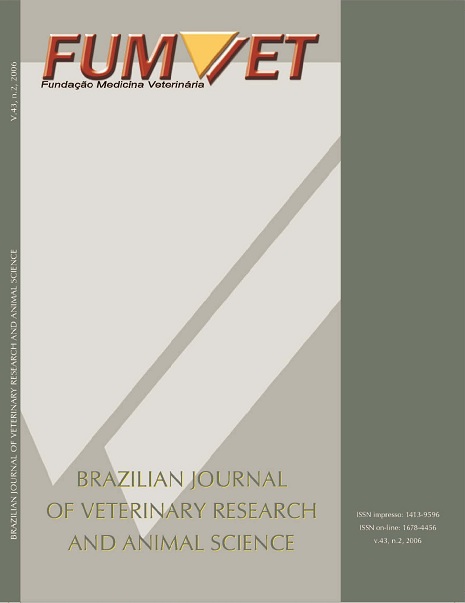Effects of increasing neutral detergent fiber in swine diets on the morphology of digestive and non-digestive organs
DOI:
https://doi.org/10.11606/issn.1678-4456.bjvras.2006.26500Keywords:
Dietary fiber, Digestive tract, HayAbstract
This work was targeted to evaluate the effects of including 0 or 8% of neutral detergent fiber from grass hay on the morphology of digestive and non-digestive organs of swine receiving starting or growing-finishing diets. It was employed cross-bred animals fed isoproteic and isoenergetic ad libitum rations in a completely randomized experimental design. At the end of each period, animals were slaughtered and eviscerated. It was detected that the fibrous ration increased the weight of empty stomach, large intestine and filled cecum (as a percentage of live weight) of starting animals. In the growing-finishing animals fibrous ration increased the weights of filled gastrointestinal tract and empty stomach. Higher weights of some digestive organs suggest a possible morphological adaptation to high fiber diets.Downloads
Download data is not yet available.
Downloads
Published
2006-04-01
Issue
Section
UNDEFINIED
License
The journal content is authorized under the Creative Commons BY-NC-SA license (summary of the license: https://
How to Cite
1.
Gomes JDF, Fukushima RS, Putrino SM, Grossklaus C, Lima GJMM de. Effects of increasing neutral detergent fiber in swine diets on the morphology of digestive and non-digestive organs. Braz. J. Vet. Res. Anim. Sci. [Internet]. 2006 Apr. 1 [cited 2024 Apr. 26];43(2):202-9. Available from: https://www.revistas.usp.br/bjvras/article/view/26500





